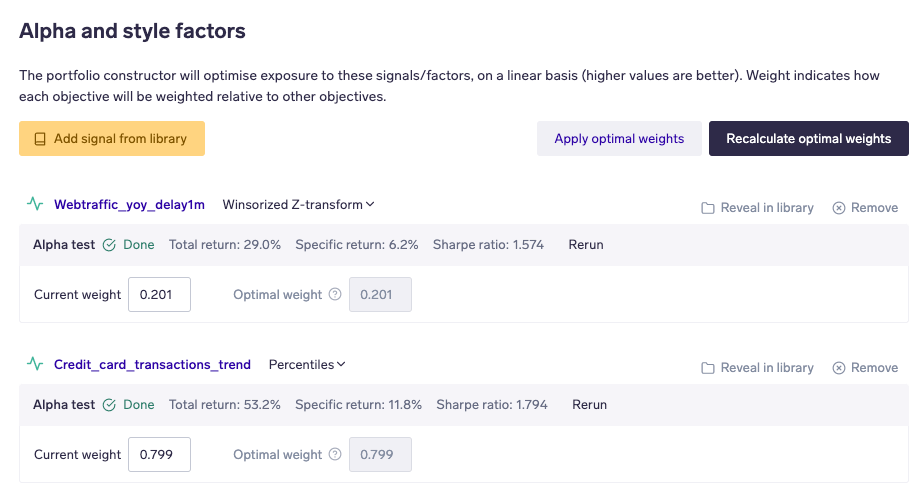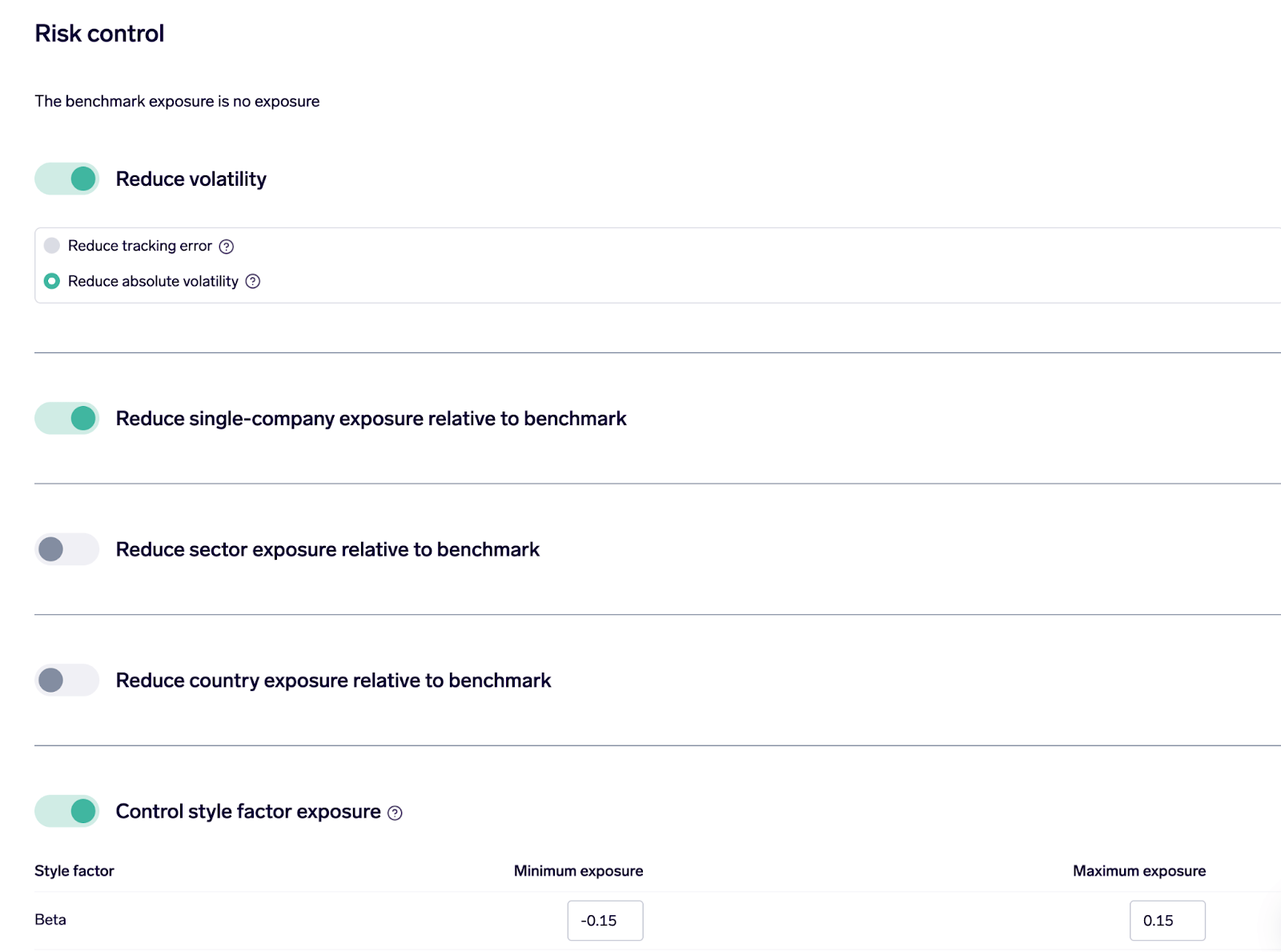Portfolio Strategies - Setup
You can setup a new portfolio strategy with the following steps:
- Select strategy type and universe
- Incorporate alpha and style factors
- Apply risk controls
- Choose rebalancing options
1. Strategy & Universe
Choose the type of strategy you’d like to run i.e. Long only or a Long/short portfolio. You can set the maximum allocations on a single stock, and your leverage depending on your portfolio mandate. E.g. Some hedge funds typically do a 130/30 with 130% long exposure, and 30% short exposure with not more than 3% allocation on a single stock, which would mean a net exposure of 100% and a gross exposure of 160%. In this case they are trying to beat the performance of the benchmark by taking active long and short positions. You could also try and have a different stock picking universe than the benchmark universe. E.g if you only want to invest in stocks that have done well in the last 1 year, then you can use the company screener tool to limit, let’s say, the top 20% momentum stocks and use that as the stock picking universe.
2. Alpha & Style Factors

Include constructs in the combination, choose the normalization style for your signal and you can run an alpha test in the tab to check the performance of the constructs you are including in your strategy. The “Apply optimal weights'' calculates the best set of weights during the training period to be used for the portfolio. In the example shown, we have used credit card growth trend and the web traffic momentum as two indicators of alpha in the resultant portfolio.
3. Risk Controls

Choose from various risk controls ranging from minimizing exposure to benchmark to minimizing tracking error/absolute volatility. There are options to override sector and country exposures to set your own limits. These exposures range from -100% to 100%.
You could also set limits to style factor exposures. These exposures vary from -3 to 3. For a long/short portfolio, if you’re looking to avoid exposure to common style factors, you’d typically like to keep these exposures between small negative and positive values.
4. Rebalancing Options

Choose the rebalancing frequency and backtesting period, with optionality of putting in transaction costs for each trade. Auto-filter extreme movements would remove any stocks from consideration that have greater price jumps than the given threshold.
If you observe stocks moving in and out of your portfolio frequently, you can switch on the “Minimize Turnover” option to add penalties in the objective function for high churn.
Updated 27 days ago